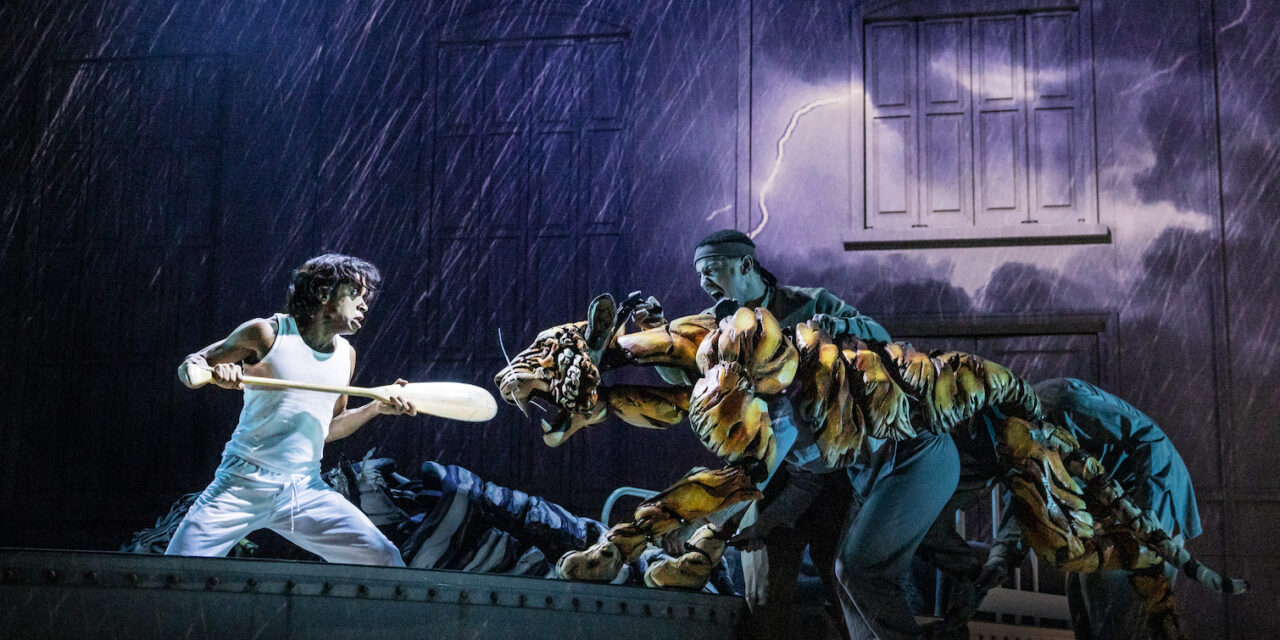By Carole Di Tosti . . .
Through the intuitive genius of masterful puppeteers and a superlative team of theatrical artists, the impossible journey at the center of Life of Pi is brought to stylized life at the Gerald Schoenfeld Theatre. The spellbinding, otherworldly production, directed by Max Webster, captivates with flashes of the sacred and profane. It compels us to consider that all things are possible for those who believe in childlike wonder during times of extreme crisis.
Lolita Chakrabarti’s splendid stage adaptation is loyal to the novel by Yann Martel. With profound subtlety, Chakrabarti enhances the novel’s philosophical dualism which gives rise to the characters’ conflicts as they deal with aspects of light and dark, and the spiritual and empirical. These elements of human existence, Pi (Hiran Abeysekera) accepts as forming a complete circle of divine wisdom. On the other hand, the investigator for the Japanese Transport Ministry, Mr. Okamoto (Daisuke Tsuji), and even the kind Lulu Chen (Kirstin Louie), are confounded by such elements.
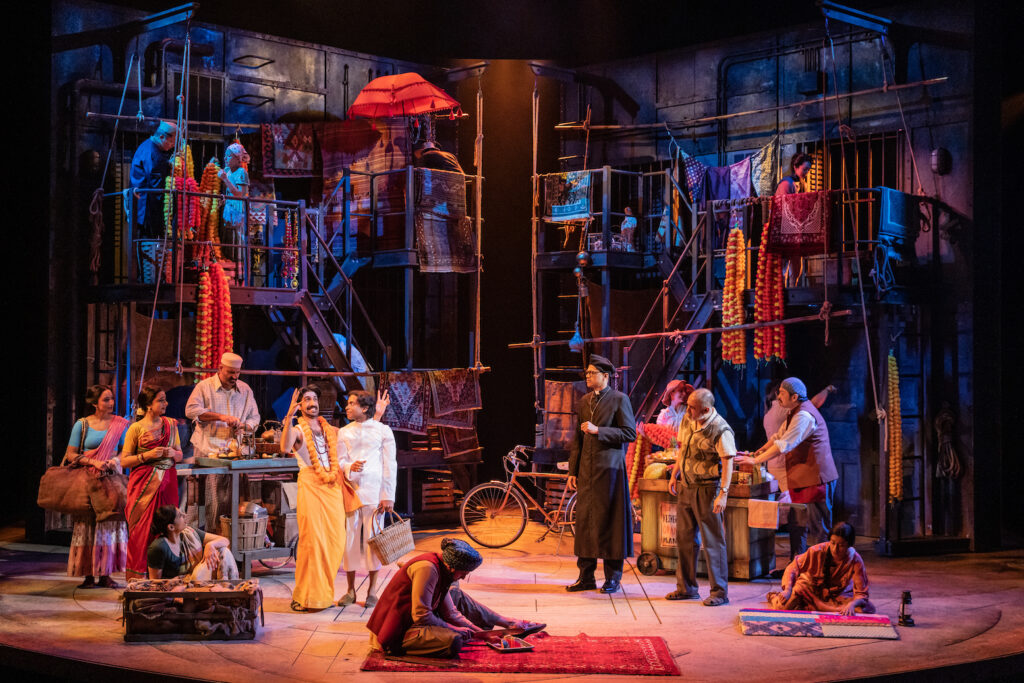
The action opens in a hospital room with a bed center stage. Tim Hatley’s cream-colored backdrop of doors conveys Pi’s world in flashback. The doors prove versatile in creating the zoo enclosure behind which the animals lurk. Also, they part to reveal a section of the massive, black, cargo ship Tsimtsum. The ship disappears when Pi’s trial at sea begins. While Pi recounts the unbelievable events that leave him as the sole survivor of the disaster, he relives the experience metaphorically, and viscerally. The more he describes his mind-bending adventure, the more Tsuji’s Okamoto and Louie’s Chen think he is deranged.
A clue to Pi’s intentions is revealed when he shares his youthful, teenage exuberance in 1976 Pondicherry, India, where he lived with his zookeeper father (Rajesh Bose), mother (Mahira Kakkar) and sister Rani (Sonya Venugopal). There, he seeks God’s love from the perspectives of Christianity, Islam, and Hinduism. When the religious leaders discover this, they are outraged. Pi tells them he desires a more complete understanding of God.
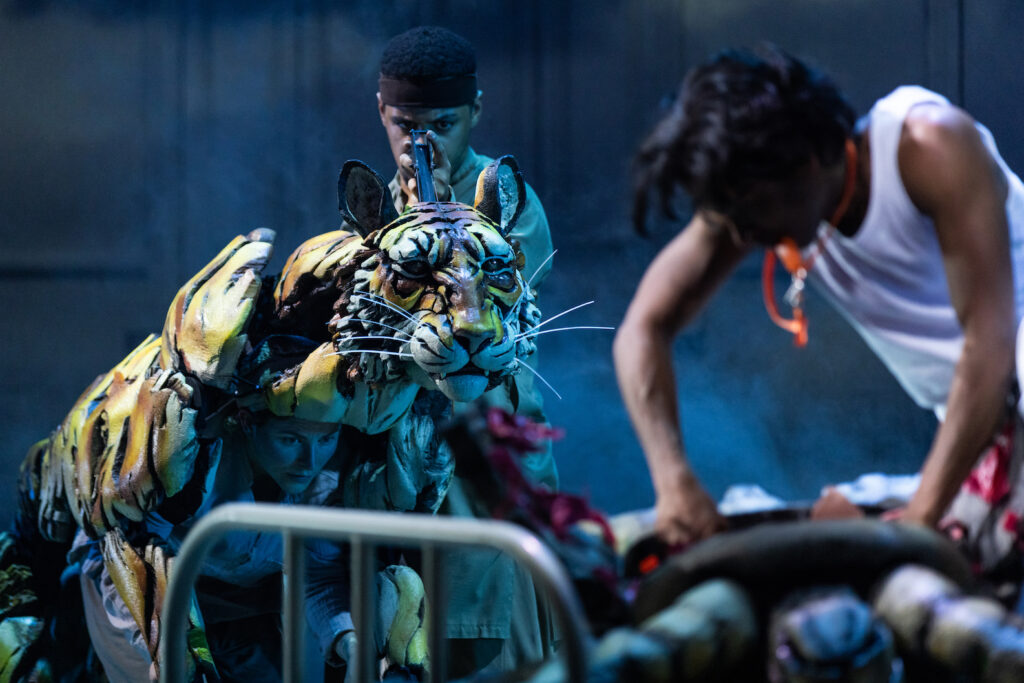

Using belief as a jumping-off point, Pi challenges the atheistic Mr. Okamoto. He affirms that he will tell him everything, “because my story will make you believe in God.” At this pronouncement, the symbols of resurrection—delicately hued butterflies—encircle the hospital room. Fluttering prettily, they magically transform the room into the zoo with the adorable animals who principally figure in Pi’s story. We meet the orangutan Orange Juice and her baby; the feisty zebra, Black and White; and Hyena, who attacks and eats its prey alive with powerful, crushing jaws.
The director shepherds the cast and creatives to maximum effect so that the irrational and cogent cohabit on a lifeboat. Pi’s circumstance becomes a metaphor for humanity’s struggle to triumph over fear. By the play’s conclusion, the psyche of a young man is cleansed, perhaps healed by his storytelling. Indeed, the audience accepts the wisdom and immutable truths Pi suggests with his parable. And like Mr. Okamoto, the audience rejects his matter of fact, rational and horrific summation of events about his survival 227 days at sea.
Hiran Abeysekera portrays Pi in a gobsmacking performance of emotional and physical agility, brilliance, and range. As a storyteller, Abeysekera’s Pi is dramatic, mesmerizing, convincing and dangerous. The ferocity of his will toward destiny is demonstrated in the fact that he changes his identity. He renames himself “Pi” (π), the irrational number with infinite calculations.
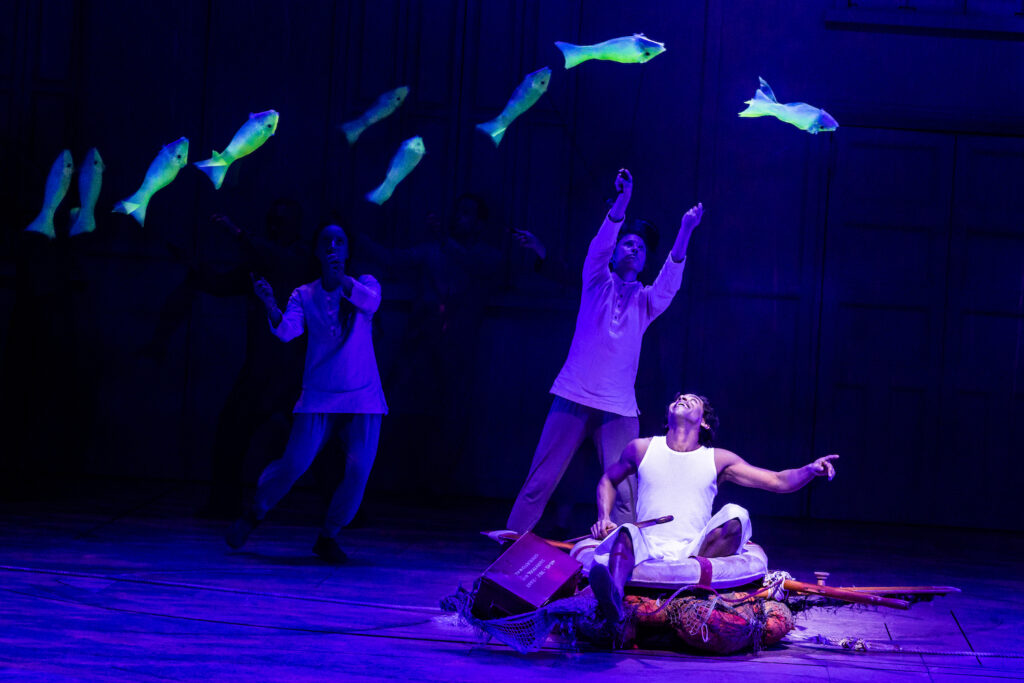

The production reveals Webster’s superb understanding of how to thread the spiritually symbolic with the mundane reality of Pi’s interrogation by Mr. Okamoto. Webster’s vision and Chakrabarti’s adaptation reveal the conflict between Okamoto’s empiricism and Pi’s heroic consciousness that astounds us with beauty and lyricism.
Webster aligns his cast and creatives to capture our sensibilities to believe in the gorgeous animal creations, the moving sea, the frightening tempest that sinks the ship, Pi’s floating on ocean currents, the animal calls of happiness and desperation, and above all Richard Parker. The tiger’s sentience is supernal. Mr. Okamoto figures out his identity at the conclusion.
Webster’s magicians include Finn Caldwell (puppetry & movement direction), Tim Hatley (scenic & costume design), Nick Barnes & Finn Caldwell (puppet design), Tim Lutkin (lighting design), Carolyn Downing (sound design), Andrzej Goulding (video design & animation), David Brian Brown (wig design), and the excellent Andrew T. Mackay (composer). Their collaborative efforts cohere in thematic accord. Their impact on Life of Pi is nonpareil. The cast and creatives represent the best of live theater.
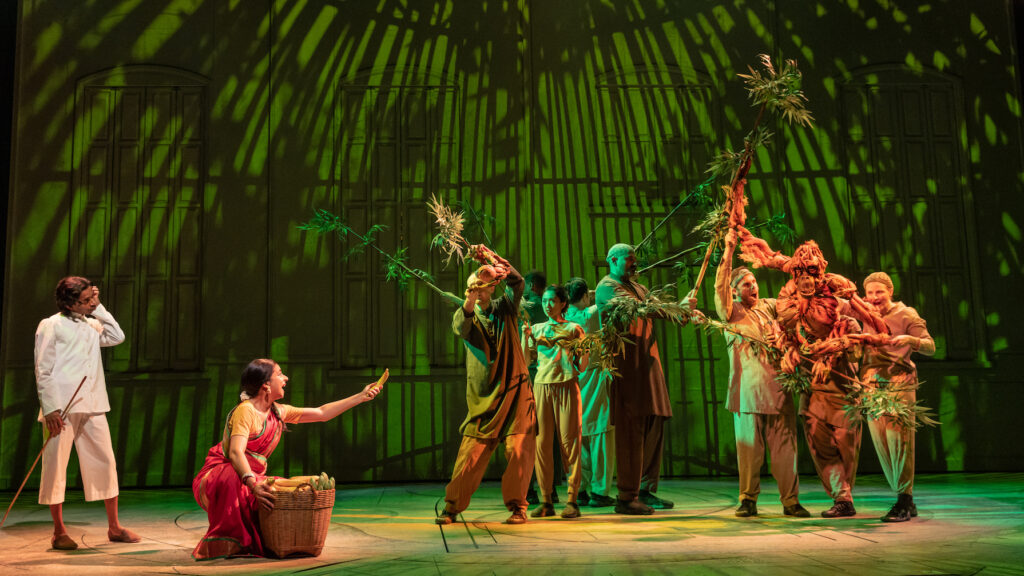

Webster’s staging is thrilling. It includes trap doors into the ship’s hold, the hospital bed on the lifeboat, which swirls around on the sea (a rotating platform), Richard Parker swimming in the mist-breathing ocean and loping into the hospital room, etc. Webster’s vision recognizes the coexistence of reality and Pi’s singular imagination anchored to it. Throughout, the parallel settings of present and past intrude on one another, suggesting philosophical themes about the ever presence of time and being. They also suggest that past events originate and live in Pi’s consciousness.
This stylization massages us to accept that “anything is possible.” We are convinced by the formidable and mythic spectacle that Pi has a point when he says, “ . . . doubt as a philosophy of life is like choosing immobility as a mode of transport.” Thus, we are entranced to believe in Richard Parker’s conversation with Pi, the fluttering grace of the flying fish, and the sea turtle’s slow swim across the stage that somehow has been transformed into a watery, lustrous medium. Life of Pi is not to be missed.
Life of Pi. Through September 3 at the Gerald Schoenfeld Theatre (236 West 45th Street, between Eighth Avenue and Broadway). Two hours, 15 minutes with one intermission. www.lifeofpibway.com
Photos: Matthew Murphy & Evan Zimmerman for MurphyMade


